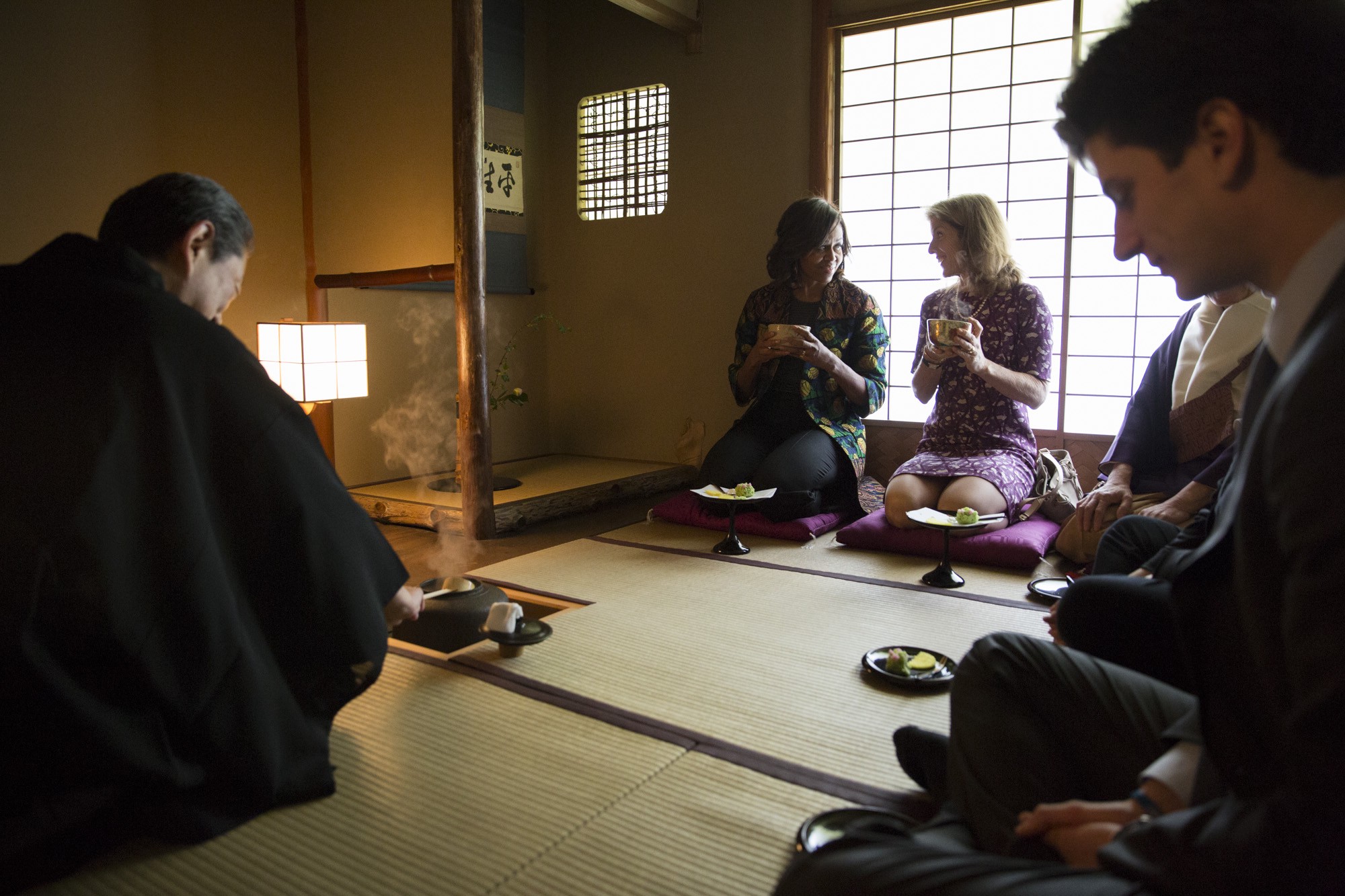
First Lady Michelle Obama is keeping a travel journal while promoting the Let Girls Learn initiative in Japan and Cambodia. Her third post appeared on Medium today.
Today we traveled to the beautiful Japanese city of Kyoto.
Tucked into a valley and surrounded by mountains on three sides, Kyoto was the imperial capital of Japan for over 1,000 years. Because of its majestic mountain scenery, some people called the Japanese nobility who lived there “cloud dwellers.”
Today, Kyoto is full of history and culture and color — the pink plum blossoms here are stunning… and in a few weeks, the cherry blossoms will bloom, just like they do in Washington, D.C. In fact, the trees that surround the tidal basin and the National Mall in Washington were a gift from Japan in 1912 — so our countries have been linked by these beautiful trees for more than a century.
During our visit to Kyoto, we stopped at two historic sites — the Fushimi Inari Shrine and the Kiyomizu-dera Temple. Individually, these shrines are majestic feats of design and engineering. Together, they represent the vital role that religions like Shinto and Buddhism have played throughout Japan’s history.
Our first stop was the Kiyomizu-dera Buddhist Temple which was founded more than 1,200 years ago. Buddhism is focused on helping its followers reach enlightenment through meditation and teachings on morality and wisdom — and for centuries, Buddhism and Shinto have coexisted alongside each other in Japan. Hundreds of years ago, as Buddhism spread across Asia and into Japan, magnificent temples were built in cities and mountainsides all over the country — and Kiyomizu is one of the greatest.
This temple’s name means “clear water,” a reference to the water that flows from the nearby hills. It is known for its large veranda which juts out from the mountain’s face and is held in balance by huge wooden beams. There is a famous Japanese saying that to take a great risk or go on a dangerous adventure is like “taking a leap from the veranda of Kiyomizu.” I definitely saw what they were talking about — it’s almost a 30 foot drop!
During our visit, we saw a waterfall called “Otowa” which is said to bring good luck and grant wishes to visitors who drink from it. We were also treated to a noh performance. Noh is a traditional form of Japanese theater involving music and dance and using all kinds of costumes, props, and masks. Finally, I got to watch — and participate in — a traditional Japanese tea ceremony in which tea is prepared and served through an elaborate series of graceful movements. It was magnificent.
Our next stop of the day was a Shinto shrine called the Fushimi Inari Shrine. Shinto is a religious tradition that began in about 500 BC and is rooted in rituals designed to bring people closer to the spirits of nature, or “Kami.” Every year, millions of people visit the Fushimi Inari Shinto Shrine, which is the headquarters for all of Japan’s 40,000 Inari Shinto shrines.
This shrine was built roughly 1,300 years ago as a tribute to Inari, the Shinto Kami of rice. And for miles all around the shrine, a long, winding path of thousands of orange shrine gates called “torii” line the mountain. I hiked up through these gates during my visit. Parts of the “torii tunnel” are also lined with sculptures of foxes. The fox (“kitsune” in Japanese) often serves as Inari’s messenger, and that’s reflected here at the shrine to Inari where the kitsune is a vital presence throughout the grounds.
One tradition at Shinto shrines, especially shrines to Inari, is to write down a wish. Here at this shrine, wishes are written on one side of a wooden fox ornament, and on the other side, you can draw the fox’s face. I filled out both sides of my fox.
During our visit, we were also treated to a lively taiko drumming performance by students who are part of the taiko club at their high school. This style of drumming is done in a group and involves large drums and lots of energetic movement by the drummers. I got to try some drumming myself — and I loved it!
I feel so lucky to have experienced the beauty and history of two of the tens of thousands of Shinto and Buddhist shrines throughout Japan.
And now, we’re off to Cambodia!
You can read the First Lady's initial travel journal post here, and learn more about the Let Girls Learn initiative by going to WhiteHouse.gov/Let-Girls-Learn











